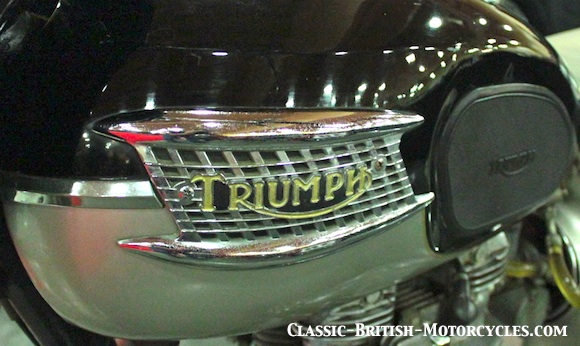1963 Triumph Thunderbird
1963 TRIUMPH THUNDERBIRD GOES UNIT CONSTRUCTION
Along with the rest of the Triumph 650 line, the 1963 6T Thunderbird converted over to Triumph’s incredible new unit-construction powerplant, frame and cycle gear. It was a major transition, with nearly every component replaced. But what a change! Unit Construction incorporated the engine, the primary drive, and the gearbox into one neat package. It seems obvious now, but up to that time, the state of the art was to mount engine, primary and gearbox as separate units within a complex set of heavy brackets that were prone to flex, loosen and get sloppy. To compound matters, the primary chain tension was adjusted by sliding the gearbox fore-and-aft in its mounts (another opportunity for play), which then affected the tension of the final drive chain, which was also attached to the gearbox. Needless to say, the new unit construction machines were simpler (which also made them cheaper and easier to produce), lighter, more compact and more powerful. But the magic didn’t end there. A new frame, suspension and brakes were huge improvements over the non-unit bikes.
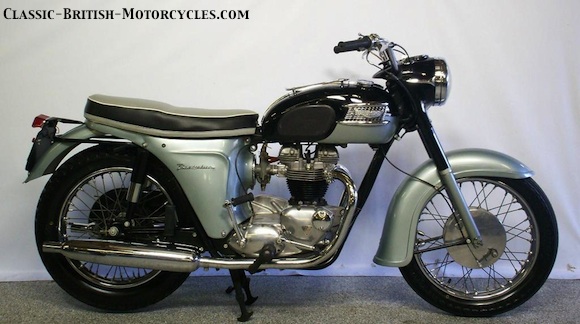
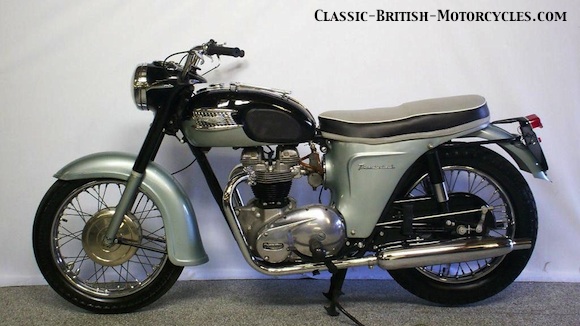
1963 TRIUMPH THUNDERBIRD FRAME & RUNNING GEAR
The single-downtube frame was all new, and much stronger than before, with a beefier swing arm in a much more solid mounting, itself tying together the front frame section, the rear frame section, and the engine mounting plates. This contributed greatly to the much-improved handling, indeed it was this basic chassis that, over the next few years, would permanently establish the entire Triumph brand as builders of the best-handling motorcycles in the world. A reputation that was further enhanced when compared to the nasty handling of many early Japanese bikes. The front forks were modified to provide more travel. Of course, a new frame required the redesign of nearly every exterior component, which was generally improved and/or restyled to give it a more current look.
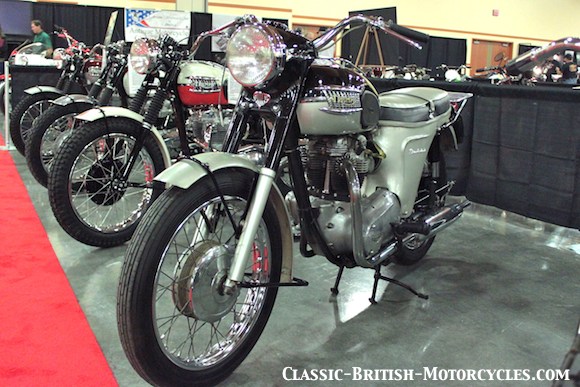
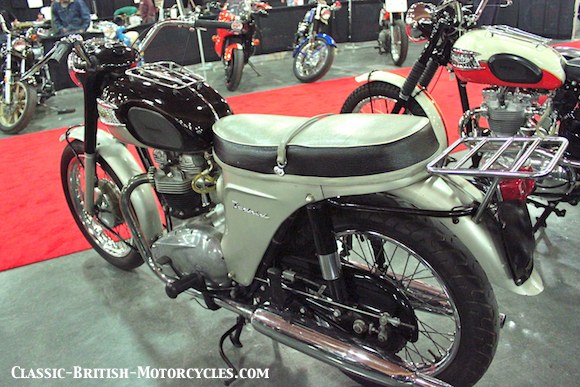

1963 TRIUMPH THUNDERBIRD GEARBOX IS DIFFERENT…
While the new unit-construction cases now housed the gearbox, internally the gearbox was virtually unchanged from before. Only the speedo drive gears were changed, to 10 and 15 teeth. The different primary drive ratio required a 20-tooth final-drive sprocket. The clutch actuator mechanism was now housed inside the outer gearbox cover on the right side, which now operated a pushrod that ran through the center of the mainshaft from one side to the other, to the clutch, on the left side. The clutch now had a 3-paddle rubber shock absorber. The 58-tooth duplex sprocketed cast-iron clutch basket housed 6 plain steel drive plates and 6 steel driven plates faced with Neo-Langite cork, compressed by 3 springs. The engine sprocket was 29 teeth, running a Reynolds 3/3 X 0.225 duplex endless chain with 84 links. Tension was now adjusted via a neoprene-lined rubber slipper at the bottom of the primary case, a huge improvement over the old, pre-unit method. The Reynolds 3/8 X 5/8 final drive chain was 104 links in length.

1963 TRIUMPH THUNDERBIRD ENGINE IMPROVEMENTS
Of course the entire mess was now contained within a single compact assembly, which was a major leap forward over the gaggle of separate components that came before. So, the cases were entirely new, however the basic architecture, and (although in modified or improved form, perhaps) the core components remained fundamentally the same. Countless improvements were made in them, however. For instance, the lock washers used on the flywheel retaining bolts were eliminated in favor of a dab of Loctite. There were now 9 head bolts instead of 8 as before, adding one between cylinders, and moved them all out farther from the cylinder bores, for greater strength and less bore distortion. New rocker boxes now had cooling fins, but more importantly, used spring-loaded locking clips to keep the valve inspection caps from working loose. The crankshaft oil feed was extended to accept an oil seal in the timing cover. The timing gears were wider to reduce noise. A new Lucas 4CA contact breaker assembly incorporated automatic spark advance and retard, with 14 degrees of range. A brass-bodied oil pump replaced the former cast iron unit. The settings on the Amal Monobloc carburetors were revised to 230 Main Jet; C-type Needle; and a #4 Throttle Valve.
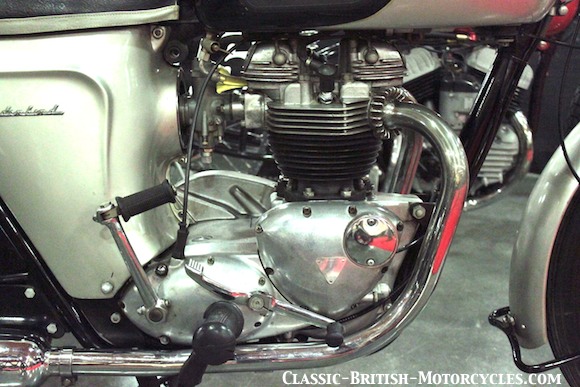
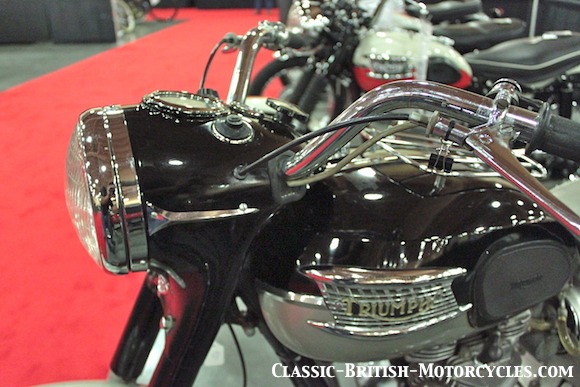
1963 Triumph Thunderbird SPECIFICATIONS
|
Engine type Displacement Bore & Stroke Compression Carburetor Engine Output Primary Drive Clutch Final Drive Gearbox Ratios, overall 1st, Bottom 2nd 3rd 4th, Top Suspension, front Suspension, rear Brakes, front Brakes, rear Tire, front Tire, rear Wheelbase Seat height Ground clearance Dry weight |
Air-cooled OHV vertical twin 649cc 71mm X 82mm 8.5:1 1- Amal Monobloc 42 hp @ 6,500 rpm 3/8″ triplex chain Multi-plate, wet 5/8″ X .400″ chain 4-speed constant-mesh, right foot shift —- 11.8:1 8.17:1 6.76:1 5.84:1 Telescopic fork, 2-way damping Swing arm, 2 hydraulic dampers 8.0″ SLS drum 7.0″ SLS drum 3.25″ X 19″ 4.00″ X 18″ 54.5″ 32.5″ 5.0″ 363 lbs |


